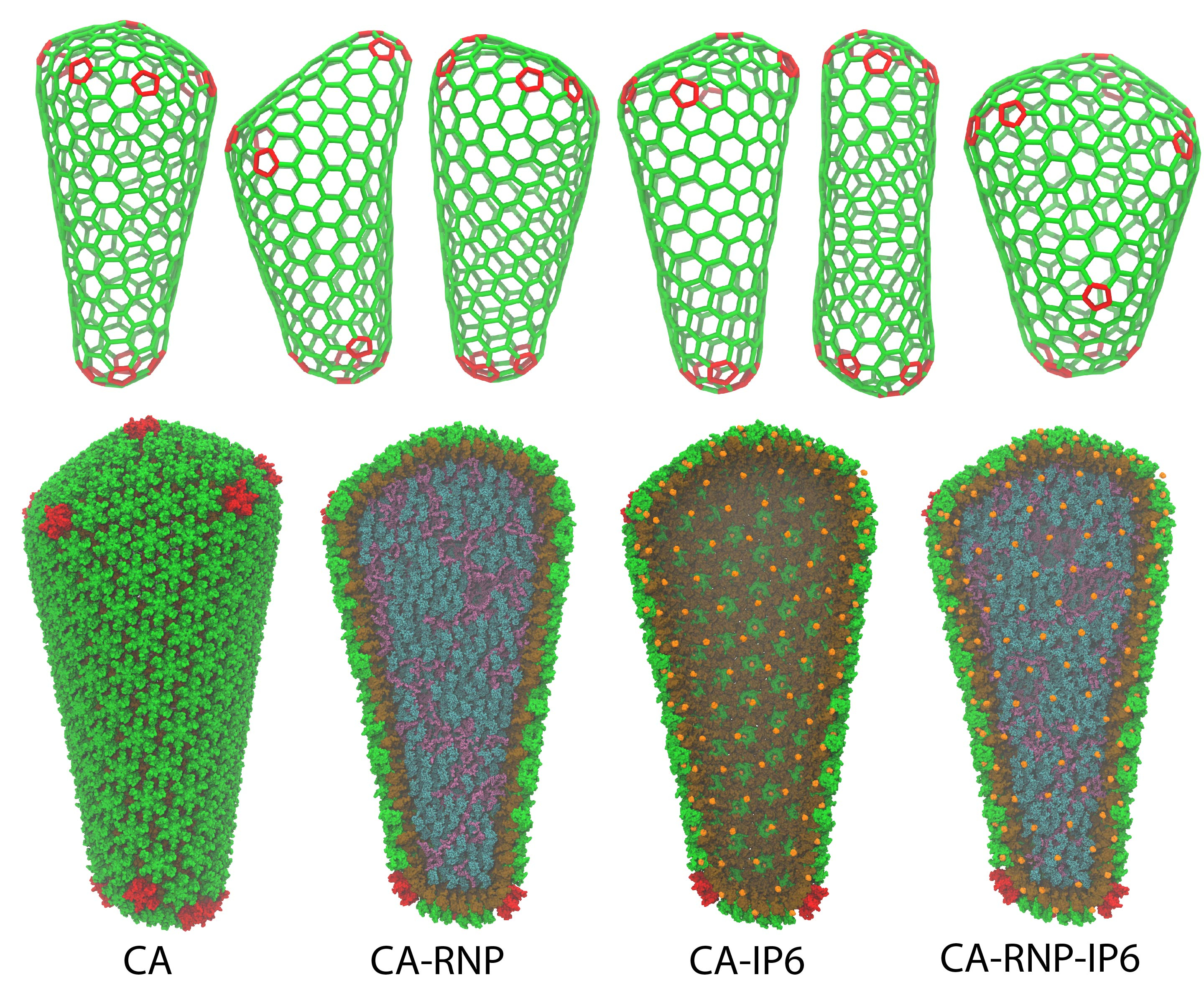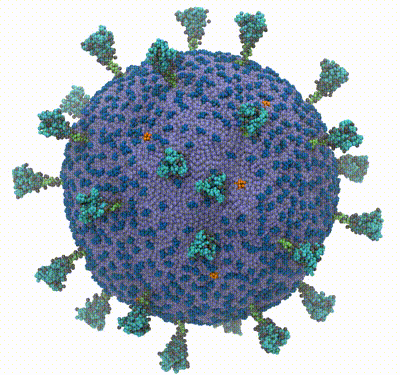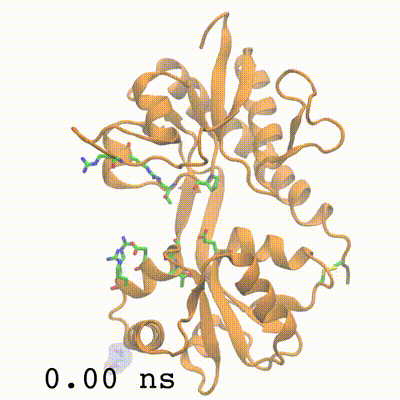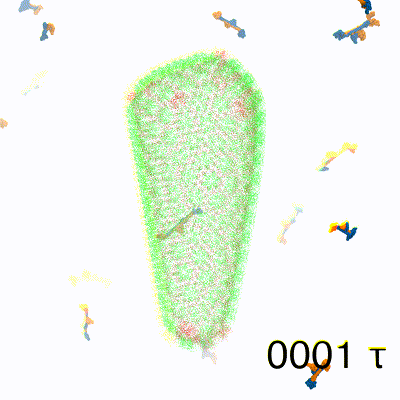Many cellular processes that are considered the hallmarks of living systems undergo physical and chemical processes ranging from atomic-scale phenomena, including the quantum chemistry of bond cleavage, to micrometer-sized processes such as the self-assembly of proteins. These processes are innately multiscale and span time and length scales from the molecular to mesoscopic. Our research group investigates the mechanisms by which biological processes function and elucidates them using theory, computational modeling, and simulations.
Human Immunodeficiency Virus
Viruses undergo morphological change involving physical and chemical transitions during the viral life cycle. Mature HIV capsids are transiently stable protein shells that encase and protect the retroviral genome. These capsids are fullerene structures that self-assemble extracellulary during maturation of the virus, are deposited in the cytoplasm, and rupture in the nucleus. Uncoating releases viral DNA and enzymes that archive a copy of the virus in the host genome. The timing of rupture is regulated by increasing internal pressure from reverse transcription. We recently demonstrated that the binding of a small-molecule co-factor, hexakisinositol phosphate (IP6) drastically stabilizes the fullerene capsid. Interactions with cellular cofactors and small molecules can also change the capsid’s mechanical properties, such as brittleness or rigidity, making it an attractive drug target. Our research in this area is focused on developing molecular characterizations of critical replication events in HIV to model and predict how we can disrupt the viral life cycle.

Publications:
- “Strain and rupture of HIV-1 capsids during uncoating” PNAS (2022) Yu A, Lee EMY, Briggs JAG, Ganser-Pornillos BK, Pornillos O, Voth GA
- “Atomic-scale characterization of mature HIV-1 capsid stabilization by inositol hexakisphosphate (IP6)” Science Advances (2020) Yu A, Lee EMY, Jin J, Voth GA
SARS-CoV-2
During the COVID-19 pandemic, we were the first to develop a multiscale molecular model for the complete SARS-CoV-2 virion to characterize the dynamic behavior of SARS-CoV-2 structural proteins, including the spike (S), membrane (M), envelope (E), and nucleocapsid (N) proteins which comprise the major components of SARS-CoV-2 particles. Our initial models, methods detailing how to build them, and early results were made immediately publicly available, and we showed that the virion spikes have a surprising degree of flexibility and collective dynamics, which involve splaying, rocking, and twisting motions that are necessary to engage host cell ACE-2 receptors. We are currently interested in investigating the molecular events, which are critical for the transmission and propagation of the virus.

Publications:
- “A multiscale coarse-grained model of the SARS-CoV-2 virion” Biophysical Journal (2021) Yu A, Pak AJ, He P, Galvan VM, Casalino L, Gaieb Z, Dommer AC, Amaro RE, Voth GA
Neural Synapses
Synapses are the elementary unit for computation in the brain. Research into synapses has inspired the development of new statistical tools including neural networks, machine learning, and artificial intelligence. At synapses, complex processes occur that underlie the molecular basis for the neural activities of plasticity, learning, and memory. We recently showed how ionotropic glutamate receptors (iGluRs), ligand-gated ion channels embedded in the post-synaptic neuron, detect neurotransmitter release and open to allow cation flow in atomic detail. These processes trigger the generation of nerve impulses or action potentials. Our research group is investigating neural mechanisms using computer simulations to uncover fundamental principles into how synapses function.

Publications:
- “Glutamate and glycine binding to the NMDA receptor” Structure (2018) Yu A, Lau AY
- “Neurotransmitter Funneling Optimizes Glutamate Receptor Kinetics” Neuron (2018) Yu A, Salazar H, Plested AJR, Lau AY
- “Molecular lock regulates binding of glycine to a primitive NMDA receptor” PNAS (2016) Yu A, Alberstein R, Thomas A, Zimmet A, Grey R, Mayer ML, Lau AY
Innate Immune Sensors
Tripartite-motif-containing (TRIM) proteins are a family of proteins found across all metazoans that self-associate to form large complexes in the cytoplasm or nucleus. In addition to being implicated in genetic and neurological disorders as well as cancers, TRIM proteins play important roles in the cell’s intrinsic immunity. For instance, TRIM5α is an innate immune sensor that blocks HIV infection in rhesus macaques. We demonstrated how TRIM assembles to form well-ordered, hexagonally patterned lattices that cages viral capsids. Our research group is studying two key topics in innate immune proteins: 1) the restriction of viral capsids by TRIM5α and 2) the self-assembly mechanisms and immune functions of TRIM family proteins.

Publications:
- “TRIM5α self-assembly and compartmentalization of the HIV-1 viral capsid” Nature Communications (2020) Yu A, Skorupka JA, Pak AJ, Ganser-Pornillos BK, Pornillos O, Voth GA